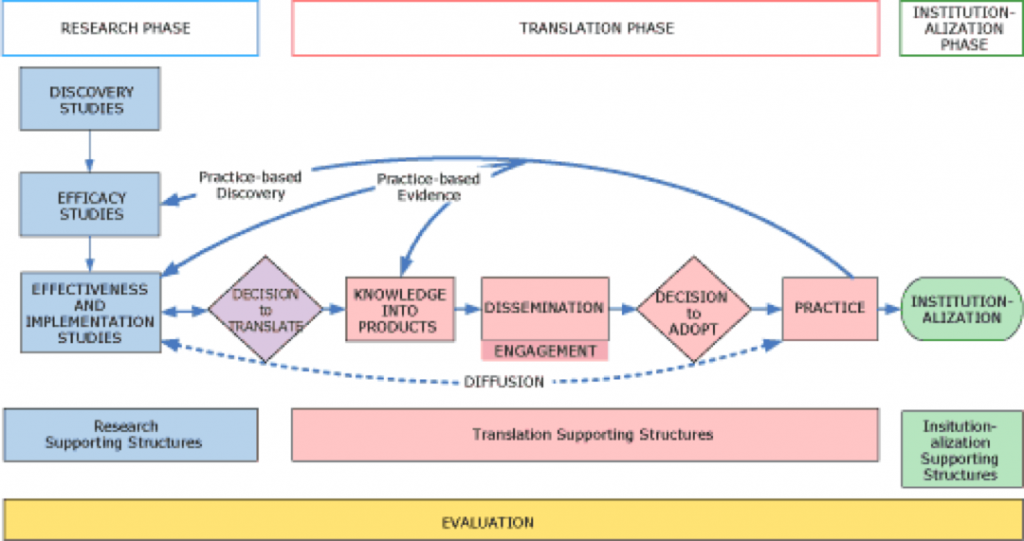Hello, I’m Erika Fulmer, a Policy Analyst with the Centers for Disease Control and Prevention’s (CDC’s) Division for Heart Disease and Stroke Prevention, and the Coordinator for CDC’s National Center for Chronic Disease Prevention and Health Promotion’s Work Group on Translation (WGOT). My team’s mission is to promote the use of the best available evidence to enhance knowledge and decision-making for the planning, development, implementation, and evaluation of cardiovascular disease prevention strategies. We use the WGOT Knowledge to Action (K2A) Framework to guide our efforts in translating scientific knowledge into public health action.

The K2A Framework captures the fundamental elements of the science translation process and provides a common language for public health practitioners and their partners. One aspect of the Framework that I find particularly useful is the emphasis on building practice-based evidence. In a field where using what works saves lives, building practice-based evidence is critical for expediting the spread of effective public health interventions. Evaluating the implementation and impact of programs in the field helps take proven interventions to scale so that benefits are quickly achieved at a population level.
Lessons Learned:
- When your goal is population-level change, make sure you have a breadth of perspectives at the table. In my unit alone, I work with behavioral health scientists, epidemiologists, public health attorneys, economists, nurse practitioners, physicians, and pharmacists; not to mention an extensive, varied network of partners. By providing a consistent conceptualization of the translation process, the K2A Framework offers firm footing for understanding where we are and where we’re going in building practice-based evidence. The K2A Planning Guide facilitates this work by operationalizing important questions for different roles throughout the translation process.
- Don’t dismiss the importance of a common language when working on cross-disciplinary teams. The K2A Framework’s clear definitions of translation-related elements and decision points help transcend the confusion and disagreements that can arise when professionals from different disciplines take on a project. The Framework’s accommodating definitions highlight the strength of multifaceted perspectives when translating knowledge to practice.
- Understand that in building evidence-based practice, the path “forward” may at times include going backward and sideways. The K2A Framework is not intended to be linear. It does not assert standards of “adequate evidence” or prescribe specific activities. Instead, it provides a high-level framework applicable regardless of context, disease/condition, or type of intervention. It denotes common decision points while acknowledging that the science translation process involves multiple pathways and numerous feedback loops. Remember, it’s not uncommon that a practice-based finding raises more questions and new lines of inquiry than it addresses.
Rad Resources:
- An Organizing Framework for Translation in Public Health: The Knowledge to Action Framework
- Applying the Knowledge to Action (K2A) Framework: Questions to Guide Planning
The American Evaluation Association is celebrating Translational Research Evaluation (TRE) TIG week. All posts this week are contributed by members of the TRE Topical Interest Group. Do you have questions, concerns, kudos, or content to extend this aea365 contribution? Please add them in the comments section for this post on the aea365 webpage so that we may enrich our community of practice. Would you like to submit an aea365 Tip? Please send a note of interest to aea365@eval.org. aea365 is sponsored by the American Evaluation Association and provides a Tip-a-Day by and for evaluators.
